Google is changing what it means to be a search engine with the development of Search Generative Experience. By adding new generative AI capabilities natively in search results, SEOs and marketers are headed into a new realm of understanding user intent. Google is trying to provide the best results possible, reduce secondary searches, and drive satisfaction. While intentions may be user-focused, this change will have the largest impact on search since the helpful content update in August of 2022.
Need help preparing for the future of search?
SGE is changing how users ask questions and receive information. New AI summaries will change user information expectations drastically over time. This will fuel changes in content marketing, keyword competition, cost per click, click-through rates, and user engagement. While these technologies are in the early experimental stages, Google is just getting started with ai-based SERP changes.
What is Google’s SGE?
Google’s Search Generative Experience is an experimental search result powered by generative AI. The goal of SGE is to quickly and accurately answer users’ questions with in-depth, content-rich results.
Google is using powerful, multimodal, large language models (LLMs) trained across almost 100 different languages to fulfill tasks simultaneously. The features and expansion of SGE will depend on Google’s ongoing research and the feedback they are getting from searchers.
How do I access Google SGE Beta?
Important: After you turn on SGE, it can take some time for the experiment to show up.
- Open Google Chrome on your computer.
- Ensure you’re signed into your Google account.
- Open a new tab.
- Click the Labs icon at the top-right.
- On the SGE card, turn the experiment on.
- Follow the instructions.
How Does SGE Work?
1. AI-Powered Overviews
Google is looking for helpful information and content to include in their AI-powered overviews. Google is categorizing this as a “jumping off point” for users to explore different content and perspectives. Google will list the resources it deems helpful in this summary to encourage a deeper understanding and exploration. This is a valuable position to be in as these resources will convey trust from Google.
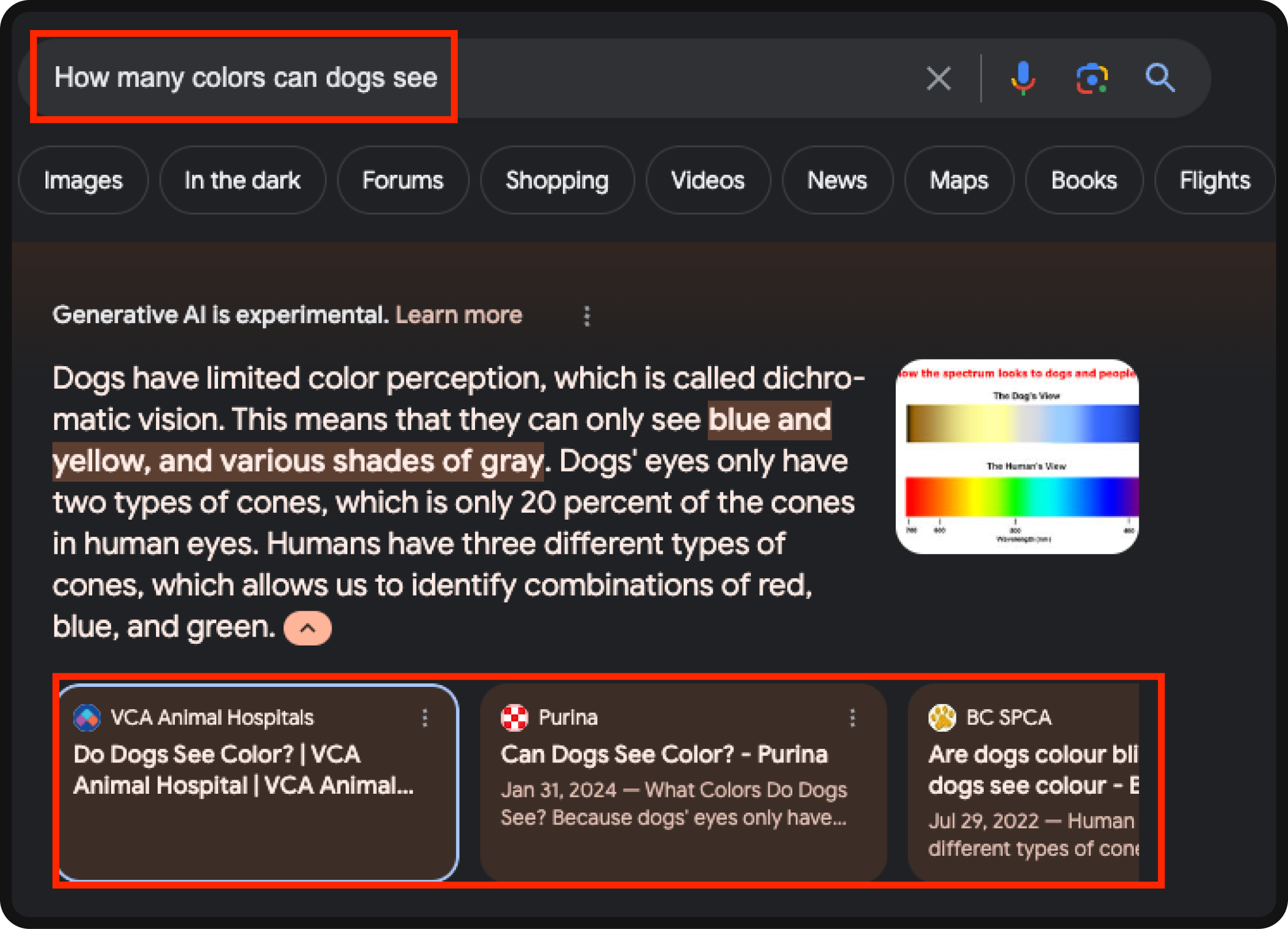
2. Easier Ways To Follow up
Google’s aim for better results will naturally reduce follow-up or secondary searches. Traditionally, a user might have to backtrack to do a follow-up search after scrolling through the options or visiting an option. With GSE, users can now easily perform follow-up searches within the AI summary results. Faster, more accurate results are going to reshape how users receive information.
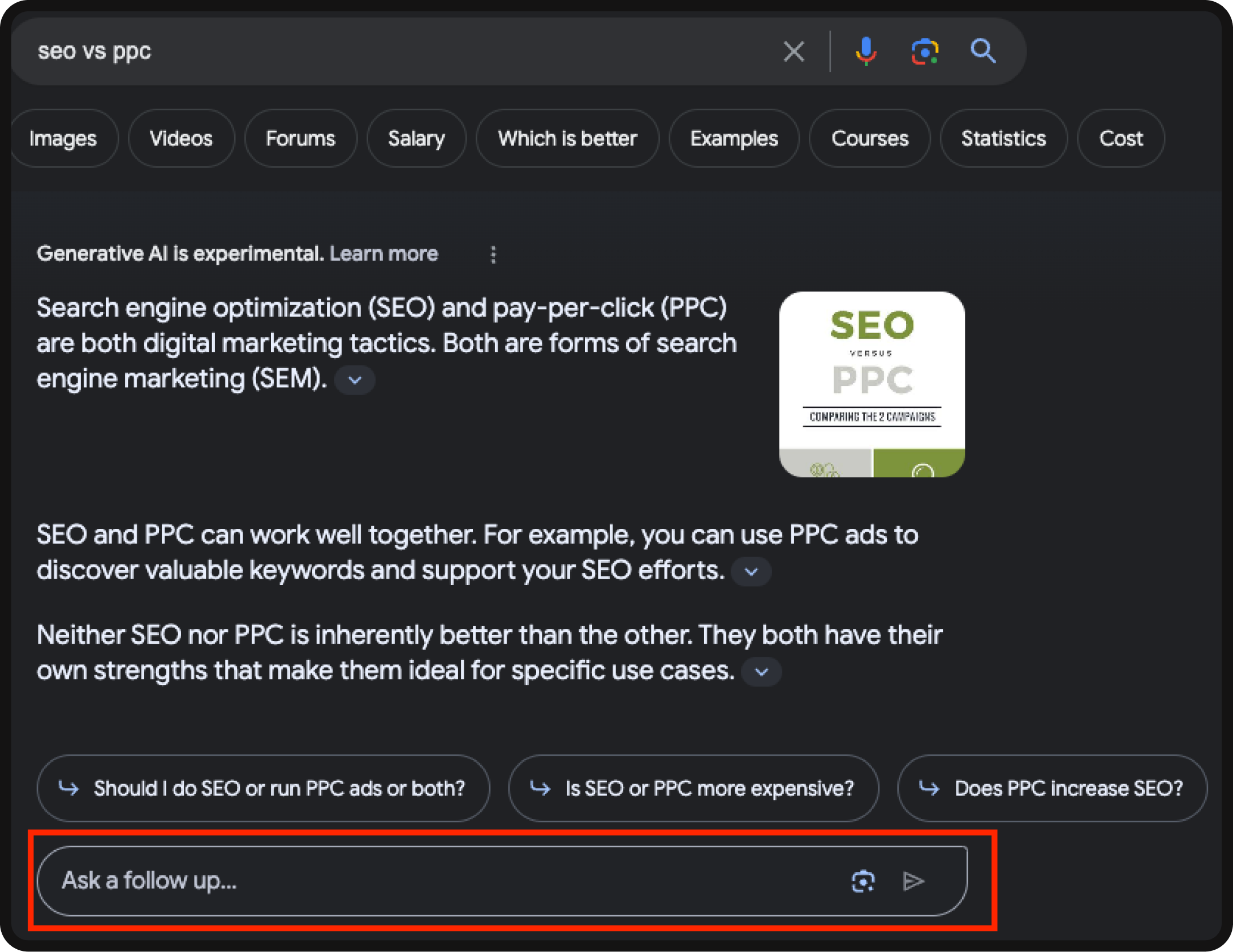
3. Vertical Experiences
Vertical experiences don’t relate to the orientation of how search is displayed; it refers to industry verticals like shopping or local searches. Google categorizes these searches as having multiple angles or avenues to explore. Product searches, for example, will have new facets to explore and narrow searches based on the number of filtering options without ever visiting a webpage.
Shopping-related searches will be heavily influenced by SGE as many E-commerce sites will have to rely more on clarity of messaging and structure of their content. As SGE is rolled out and adopted by searchers, conversion intent keywords will have increasingly dynamic search results, which could drive down website engagement.
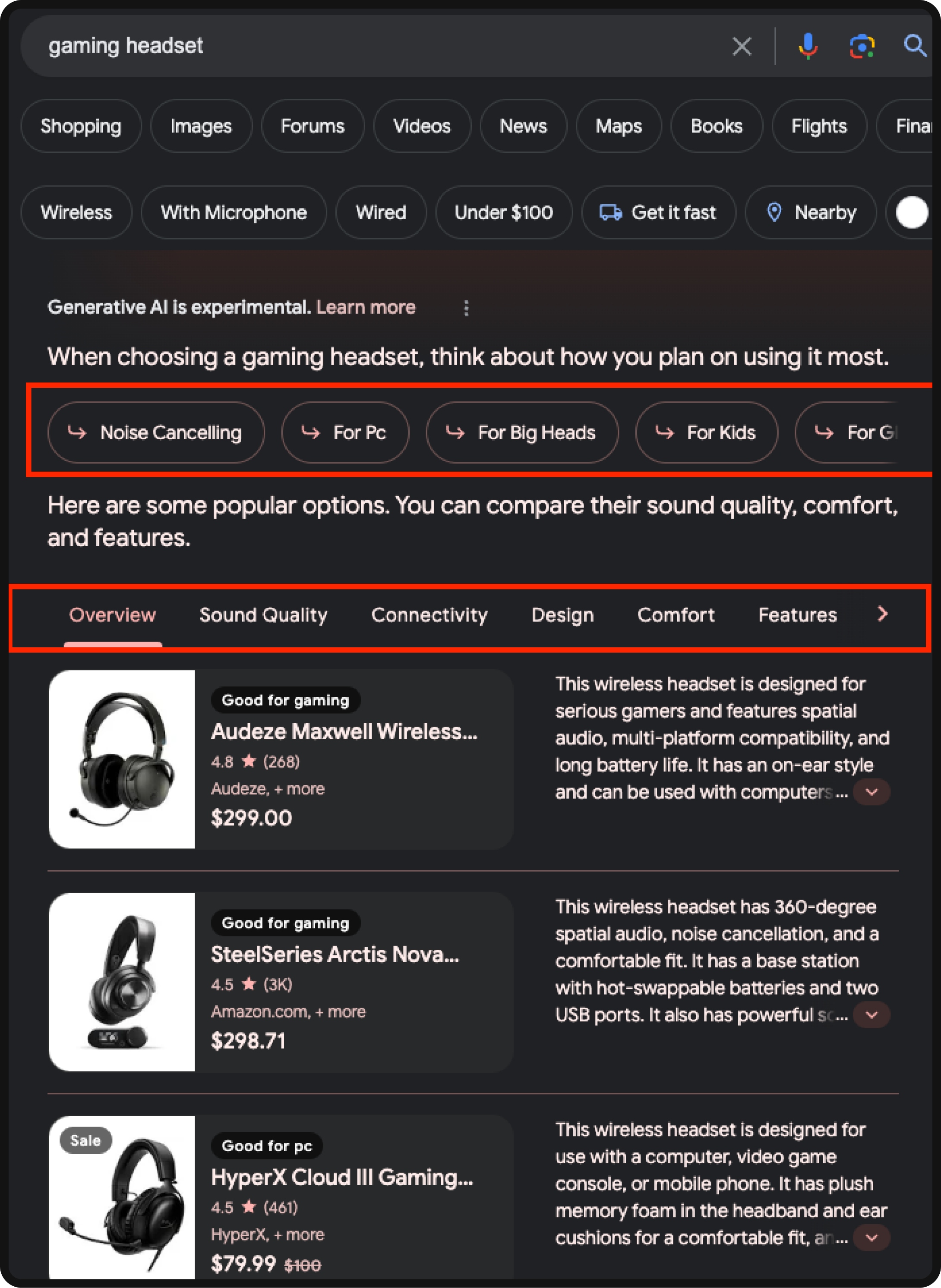
4. Search Ads
Currently, there isn’t a clear path for where ads will be included in generative search. So far, Google has said that ads “will continue to appear in dedicated ad slots throughout the page.” Google will continue to show a sponsored badge on all ad locations, but the location of these within AI summary results is unclear.
5. Creativity & Productivity
Traditional search is a list of blue links that the user has to make decisions about depending on the title and what they imagine they will uncover by clicking through. With AI-powered search, conversational answers with recommended articles and images are far more creative and helpful from a search/task perspective. Advancements in the SERP will continue to change as users interact with this information.
6. Image Generation
Maybe the most interesting portion of SGE is the ability to create dynamic images natively in search. This will revolutionize image creation and could influence how Google evaluates images from a ranking perspective. Users need to be over 18 years old to use this feature and be located in the U.S.
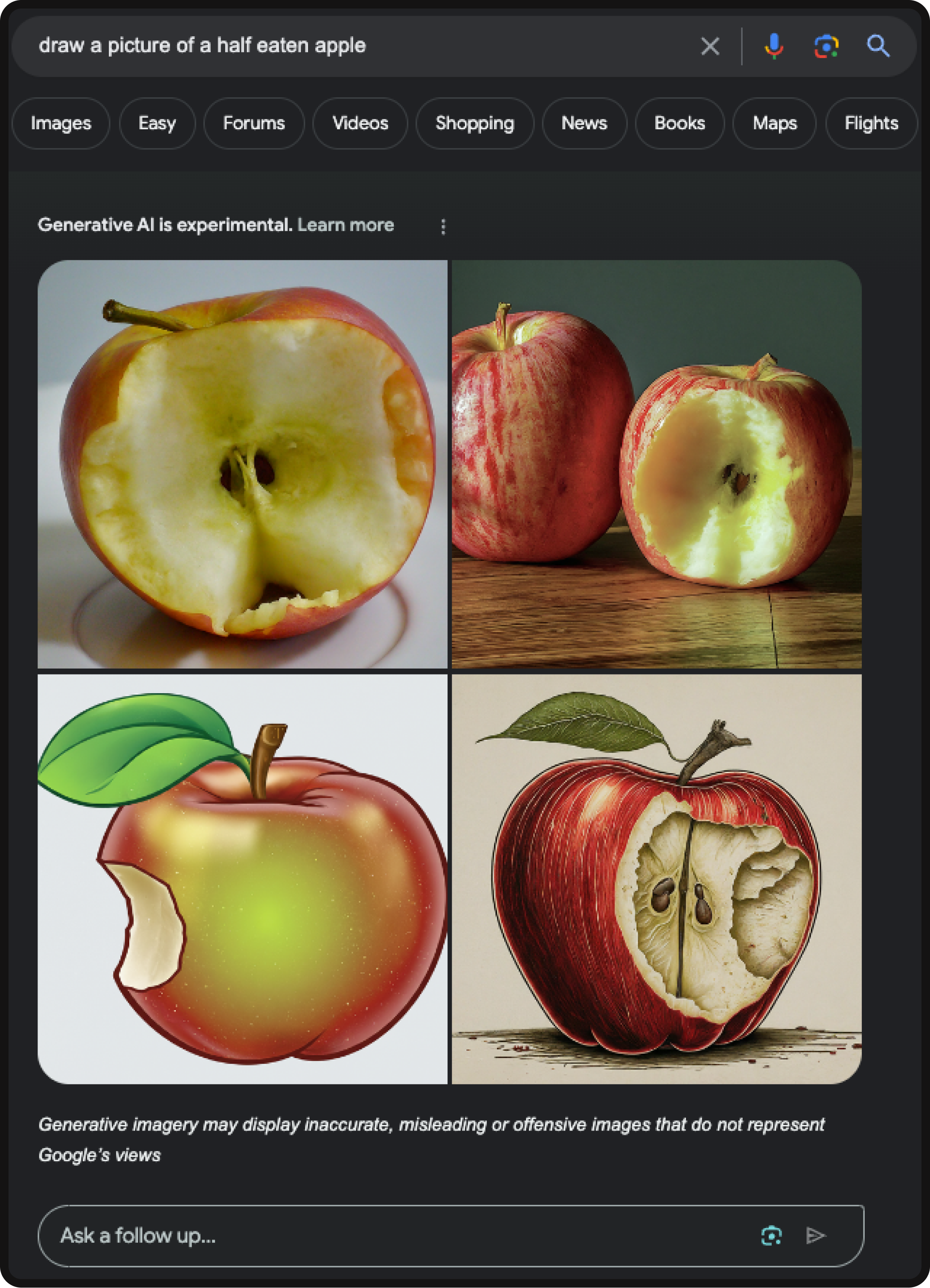
7. User Experience
All of these updates are aimed at improving user experience. The user interface of the new generative results is much more accessible for searchers looking to accomplish a task. While the focus is on user experience, marketers fighting for competitive advantage will have to be very specific when attempting to rank within the AI results. If Google is focusing its efforts on genuine, helpful results aiding users, you should too.
How does Google SGE affect SEO and Search?
While Google will argue that they are “taking more of the work out of searching” for users, marketers know that competition for the top spot is only going to get steeper. This is not only true for SEOs, Google Ads will certainly be affected but will be moved down lower on the page.
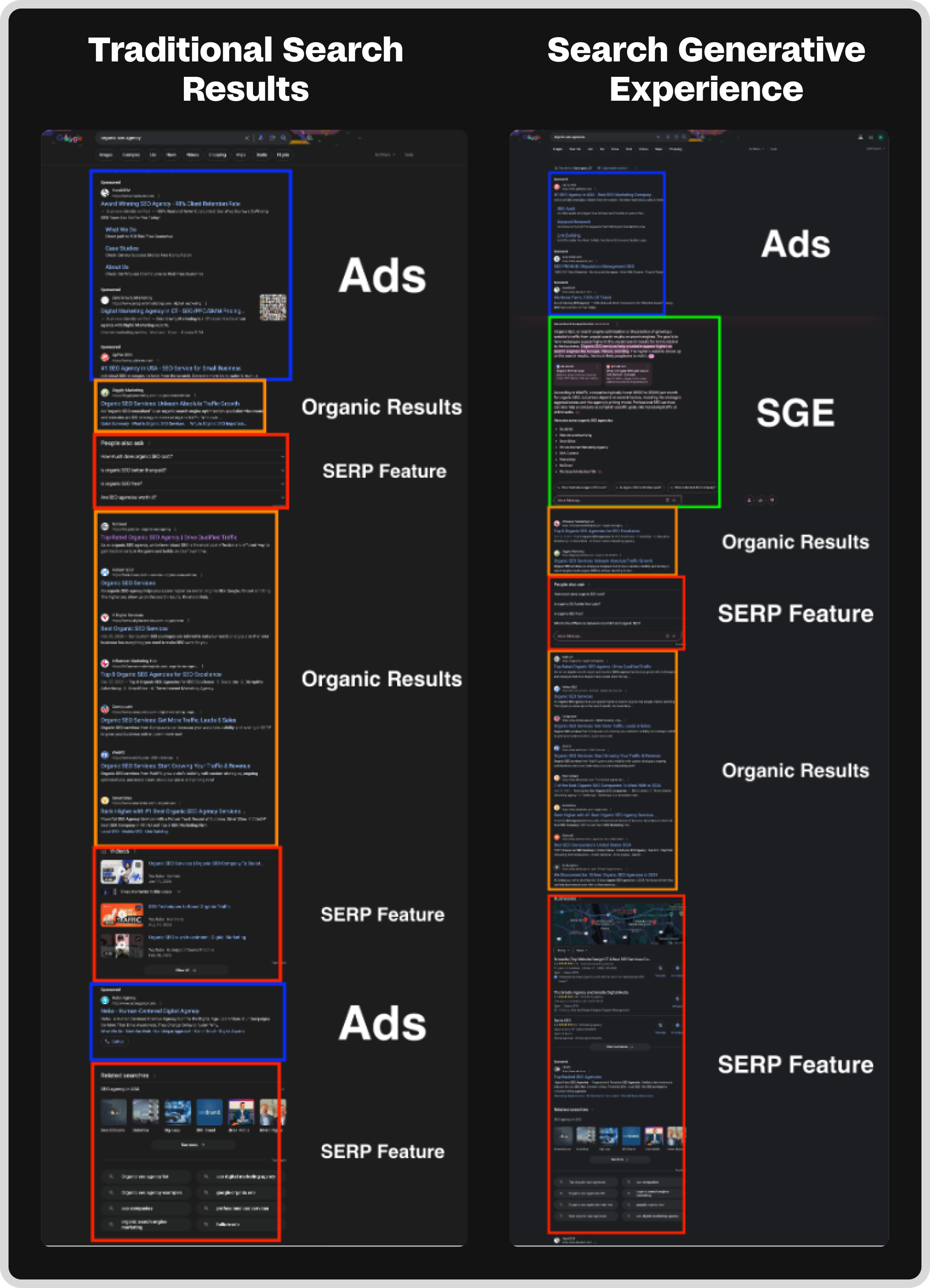
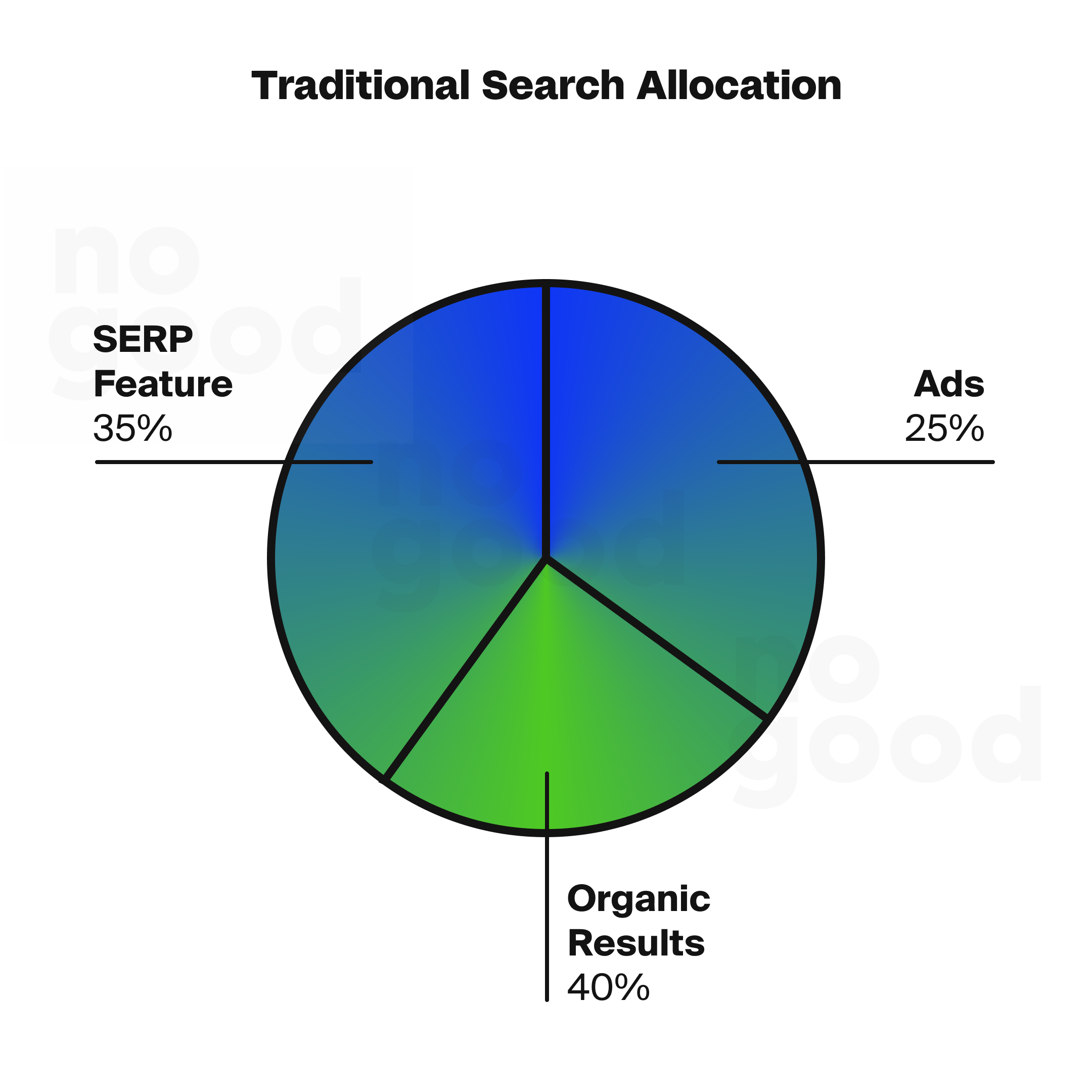
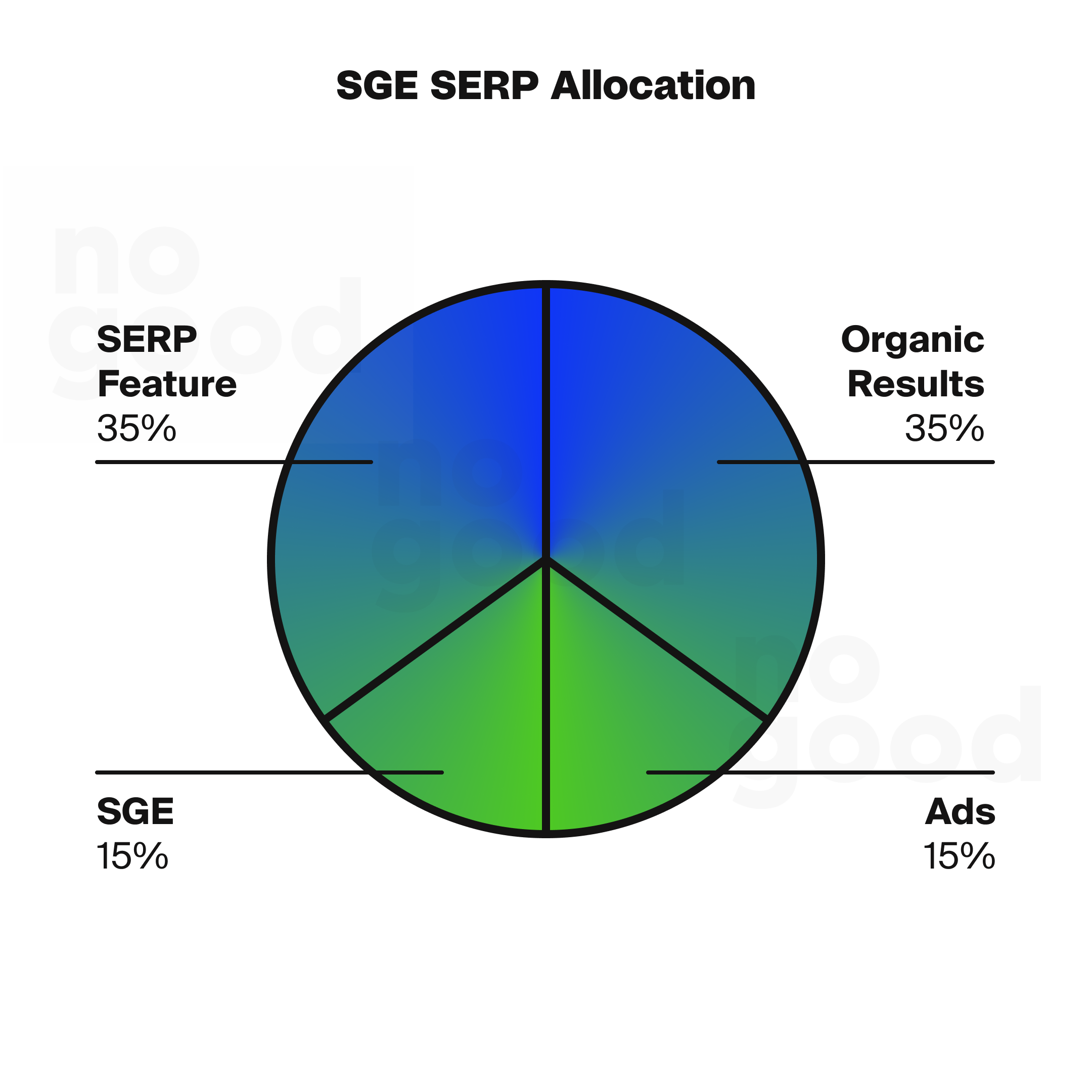
SEOs and marketers should prepare for more zero-click experiences. Google will continue to refine its SERP results until it can achieve a higher level of information delivery. Their goal is to answer the users’ questions or solve a task with as few follow-up searches as possible. When you consider their goal, marketers know that top rankings are going to surge with competition.
Pros of Generative Search Experience
Generative search engines might offer summaries alongside links. This means even if users don’t click through to your site, your brand and content get valuable exposure on the search results page (SERP) itself.
Google’s use of AI to answer questions directly in search provides a conversational experience. This change in experience can keep users engaged on the SERP. More time spent on the SERP allows marketers to deliver high-targeted content that could influence user behavior.
Google is summarizing high-quality content, to include in their generative search panel. Content quality has been a consistent thread in Google’s advice to marketers and if you have been adamant about creating informative content, you’re more likely to be favored/prioritized by generative search algorithms, leading to increased rankings.
Generative search engines emphasize understanding entities (people, places, things, concepts) within content. This means optimizing your content for relevant entities can improve your discoverability.
Cons of Generative Search Experience
Generative search introduces a layer of complexity for marketers and SEOs. Staying informed about how generative search works and adapting strategies accordingly will be crucial for maintaining good search visibility.
If generative search engines summarize content directly, it could lead to users getting what they need without ever clicking (zero-click experiences) through to your website. This could decrease traffic and potentially harm SEO in the long run.
With AI summarizing content, you might have less control over how your brand is presented. There’s a risk of inaccurate summaries or not capturing your content’s full value.
Generative search prioritizes quick answers, potentially pushing in-depth content lower in search results. This could be disadvantageous for content meant for deeper engagement. AI models can inherit biases from the data they’re trained on. This could lead to unfair treatment of certain content or brands in search results.
10 Tactics To Optimize For Generative Search
1. Create High E-E-A-T content
E-A-T stands for Experience, Expertise, Authoritativeness, and Trustworthiness. Google has long used EAT as a way to source content from credible sources. They want to prioritize in-depth analysis from industry experts that back up their claims with real-life data and examples.
2. Target User Intent
Go beyond just keywords and understand the “why” behind user queries. What are users hoping to achieve with their search? Craft content that addresses their specific needs and pain points.
3. Clearly Structure Your Content
Use headings, subheadings, bullet points, and clear language to make your content easy for AI (and humans) to understand. This ties back to the tactic above: user intent and experience will continue to be a growing metric in Google’s eyes. Make sure users can easily understand and digest the information you’re providing.
4. Answer All Potential Questions
With the development of AEO (Answer Engine Optimization), Google is more focused than ever on generating question-answer format results. If you can properly anticipate what related questions users might have, you can position your content to be favored by generative AI results.
5. Identify Relevant Entities
Consider the people, places, things, and concepts most important to your content. Optimize your content with these entities in mind, using natural language to describe them. This can help you connect the dots for Google by showing that you’ve done proper research and included the necessary entities in the development of your content.
6. Write With A Conversational Tone
Imagine you’re having a conversation with your target audience. Use clear, concise language that’s easy to understand. Google’s AI SERP will be able to easily communicate with searchers in the same way other AI chat software can. These systems thrive on human-like communication as they try to self-train and deliver the best results.
7. Create Compelling Introductions & Summaries
The beginning and end of your content are particularly important, as they’re more likely to be included in AI summaries. Make sure they accurately reflect the value of your content.
8. Use Clear Calls-to-Action (CTAs)
Even if users land on a generative search summary, a strong CTA can still encourage them to visit your website for the full story. Using phrases that resonate with your ideal customer could be the difference between a click-through or a user feeling satisfied with the AI summary.
9. Stay Up-to-Date On Generative Search Trends
The generative search landscape is constantly evolving. Staying informed about how search engines are using AI is a task all marketers need to add to their monthly cadence. Adapting your strategies will become a continuous, iterative effort.
10. Experiment with AI Tools
There are AI tools available that can help you optimize your content for search. We all know that tools claim to do a lot of things, but uncovering even a small clue from tool experimentation can make a big difference in your SEO game plan.
The Future of Search, AI & Answer Engine
The future of generative search, AI, and AEO (Answer Engine Optimization) is going to be a dynamic one, filled with both challenges and opportunities. User intent is going to play a bigger role as Google looks for information to include in its results. This will likely put a bigger emphasis on Core Web Vitals, page structure, and content.
With more emphasis on entities and trust, marketers will need to expand their research to identify key players in the topics they plan to write about. Including key entities will help connect and relate your content to others, which will drive discoverability.
The pressure isn’t just on marketers and SEOs, Google needs to continuously refine their systems to avoid developing a bias. AI systems can easily create a bias which can result in an uneven playing field. Staying vigilant on these updates will be the only way to combat SERP changes and drive growth. This is essentially Google’s last warning sign, changes are coming and everyone should be prepared for fluctuations and changes in strategy.




